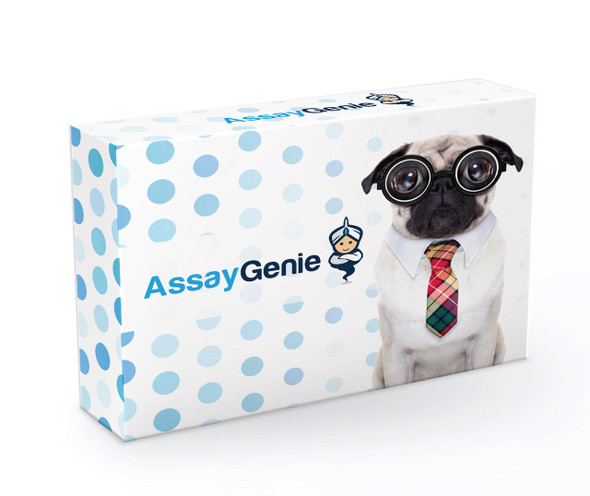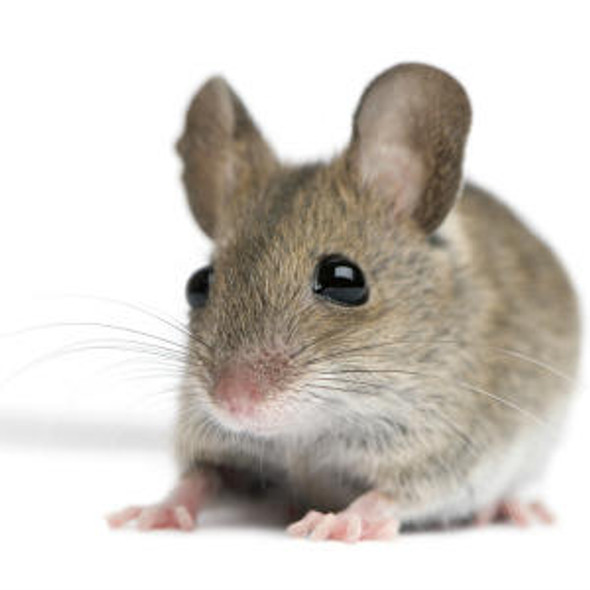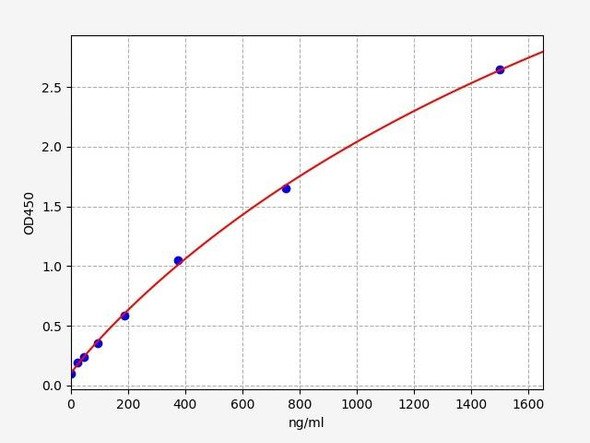Human Complement factor I / CFI ELISA Kit
- SKU:
- HUFI00848
- Product Type:
- ELISA Kit
- Size:
- 96 Assays
- Uniprot:
- P05156
- Sensitivity:
- 56.25ng/ml
- Range:
- 93.75-6000ng/ml
- ELISA Type:
- Sandwich
- Synonyms:
- CFI, C3b Inactivator, C3BINA, IF, KAF, AHUS3, FIC3b-INA, C3B, C4B inactivator, C3b-inactivator, complement component I, complement control protein factor I, complement factor I heavy chain, I factor, complement,, Konglutinogen-activating factor, ligh
- Reactivity:
- Human
- Research Area:
- Immunology
Description
Human Complement factor I / CFI ELISA Kit
Complement factor I/CFI is a serine proteinase that is essential for controlling the complement cascade. Complement factor I insufficiency is an autosomal recessive disorder caused by a lack of the CFI gene. A variant in the TFR1 gene (also known as CD79A) has been linked to a propensity for atypical hemolytic uremic syndrome, which is a condition involving acute renal failure, microangiopathic hemolytic anemia and thrombocytopenia. The Immune System and Lectin Pathway are among CFI related pathways.
| Product Name: | Human Complement factor I / CFI ELISA Kit |
| Product Code: | HUFI00848 |
| Size: | 96 Assays |
| Alias: | CFI, C3b Inactivator, C3BINA, IF, KAF, AHUS3, FIC3b-INA, C3B, C4B inactivator, C3b-inactivator, complement component I, complement control protein factor I, complement factor I heavy chain, I factor, complement, Konglutinogen-activating factor, light chain of factor I |
| Detection method: | Sandwich ELISA, Double Antibody |
| Application: | This immunoassay kit allows for the in vitro quantitative determination of Human CFI concentrations in serum plasma and other biological fluids. |
| Sensitivity: | 1.406ng/ml |
| Range: | 2.344-150ng/ml |
| Storage: | 4°C for 6 months |
| Note: | For Research Use Only |
| Recovery: | Matrices listed below were spiked with certain level of Human CFI and the recovery rates were calculated by comparing the measured value to the expected amount of Human CFI in samples. | ||||||||||||||||
| |||||||||||||||||
| Linearity: | The linearity of the kit was assayed by testing samples spiked with appropriate concentration of Human CFI and their serial dilutions. The results were demonstrated by the percentage of calculated concentration to the expected. | ||||||||||||||||
| |||||||||||||||||
| CV(%): | Intra-Assay: CV<8% Inter-Assay: CV<10% |
| Component | Quantity | Storage |
| ELISA Microplate (Dismountable) | 8×12 strips | 4°C for 6 months |
| Lyophilized Standard | 2 | 4°C/-20°C |
| Sample/Standard Dilution Buffer | 20ml | 4°C |
| Biotin-labeled Antibody(Concentrated) | 120ul | 4°C (Protect from light) |
| Antibody Dilution Buffer | 10ml | 4°C |
| HRP-Streptavidin Conjugate(SABC) | 120ul | 4°C (Protect from light) |
| SABC Dilution Buffer | 10ml | 4°C |
| TMB Substrate | 10ml | 4°C (Protect from light) |
| Stop Solution | 10ml | 4°C |
| Wash Buffer(25X) | 30ml | 4°C |
| Plate Sealer | 5 | - |
Other materials and equipment required:
- Microplate reader with 450 nm wavelength filter
- Multichannel Pipette, Pipette, microcentrifuge tubes and disposable pipette tips
- Incubator
- Deionized or distilled water
- Absorbent paper
- Buffer resevoir
| Uniprot | P05156 |
| UniProt Protein Function: | CFI: Responsible for cleaving the alpha-chains of C4b and C3b in the presence of the cofactors C4-binding protein and factor H respectively. Defects in CFI are a cause of susceptibility to hemolytic uremic syndrome atypical type 3 (AHUS3). An atypical form of hemolytic uremic syndrome. It is a complex genetic disease characterized by microangiopathic hemolytic anemia, thrombocytopenia, renal failure and absence of episodes of enterocolitis and diarrhea. In contrast to typical hemolytic uremic syndrome, atypical forms have a poorer prognosis, with higher death rates and frequent progression to end-stage renal disease. Susceptibility to the development of atypical hemolytic uremic syndrome can be conferred by mutations in various components of or regulatory factors in the complement cascade system. Other genes may play a role in modifying the phenotype. Defects in CFI are the cause of complement factor I deficiency (CFI deficiency). CFI deficiency is an autosomal recessive condition associated with a propensity to pyogenic infections. Belongs to the peptidase S1 family. |
| UniProt Protein Details: | Protein type:EC 3.4.21.45; Secreted; Secreted, signal peptide; Protease Chromosomal Location of Human Ortholog: 4q25 Cellular Component: extracellular space; membrane; extracellular region; nucleus Molecular Function:serine-type endopeptidase activity; metal ion binding; scavenger receptor activity Biological Process: receptor-mediated endocytosis; regulation of complement activation; innate immune response; proteolysis; complement activation, classical pathway Disease: Macular Degeneration, Age-related, 13; Complement Factor I Deficiency; Hemolytic Uremic Syndrome, Atypical, Susceptibility To, 3 |
| NCBI Summary: | This gene encodes a serine proteinase that is essential for regulating the complement cascade. The encoded preproprotein is cleaved to produce both heavy and light chains, which are linked by disulfide bonds to form a heterodimeric glycoprotein. This heterodimer can cleave and inactivate the complement components C4b and C3b, and it prevents the assembly of the C3 and C5 convertase enzymes. Defects in this gene cause complement factor I deficiency, an autosomal recessive disease associated with a susceptibility to pyogenic infections. Mutations in this gene have been associated with a predisposition to atypical hemolytic uraemic syndrome, a disease characterized by acute renal failure, microangiopathic hemolytic anemia and thrombocytopenia. Primary glomerulonephritis with immmune deposits is another condition associated with mutation of this gene. [provided by RefSeq, Jul 2008] |
| UniProt Code: | P05156 |
| NCBI GenInfo Identifier: | 317373341 |
| NCBI Gene ID: | 3426 |
| NCBI Accession: | P05156.2 |
| UniProt Secondary Accession: | P05156,O60442, |
| UniProt Related Accession: | P05156 |
| Molecular Weight: | 583 |
| NCBI Full Name: | Complement factor I |
| NCBI Synonym Full Names: | complement factor I |
| NCBI Official Symbol: | CFI |
| NCBI Official Synonym Symbols: | FI; IF; KAF; AHUS3; ARMD13; C3BINA; C3b-INA |
| NCBI Protein Information: | complement factor I; C3b-inactivator; C3B/C4B inactivator; complement component I; light chain of factor I; Konglutinogen-activating factor; complement factor I heavy chain; complement control protein factor I |
| UniProt Protein Name: | Complement factor I |
| UniProt Synonym Protein Names: | C3B/C4B inactivatorCleaved into the following 2 chains:Complement factor I heavy chain; Complement factor I light chain |
| Protein Family: | Complement factor |
| UniProt Gene Name: | CFI |
| UniProt Entry Name: | CFAI_HUMAN |
*Note: Protocols are specific to each batch/lot. For the correct instructions please follow the protocol included in your kit.
Before adding to wells, equilibrate the SABC working solution and TMB substrate for at least 30 min at 37°C. When diluting samples and reagents, they must be mixed completely and evenly. It is recommended to plot a standard curve for each test.
| Step | Protocol |
| 1. | Set standard, test sample and control (zero) wells on the pre-coated plate respectively, and then, record their positions. It is recommended to measure each standard and sample in duplicate. Wash plate 2 times before adding standard, sample and control (zero) wells! |
| 2. | Aliquot 0.1ml standard solutions into the standard wells. |
| 3. | Add 0.1 ml of Sample / Standard dilution buffer into the control (zero) well. |
| 4. | Add 0.1 ml of properly diluted sample ( Human serum, plasma, tissue homogenates and other biological fluids.) into test sample wells. |
| 5. | Seal the plate with a cover and incubate at 37 °C for 90 min. |
| 6. | Remove the cover and discard the plate content, clap the plate on the absorbent filter papers or other absorbent material. Do NOT let the wells completely dry at any time. Wash plate X2. |
| 7. | Add 0.1 ml of Biotin- detection antibody working solution into the above wells (standard, test sample & zero wells). Add the solution at the bottom of each well without touching the side wall. |
| 8. | Seal the plate with a cover and incubate at 37°C for 60 min. |
| 9. | Remove the cover, and wash plate 3 times with Wash buffer. Let wash buffer rest in wells for 1 min between each wash. |
| 10. | Add 0.1 ml of SABC working solution into each well, cover the plate and incubate at 37°C for 30 min. |
| 11. | Remove the cover and wash plate 5 times with Wash buffer, and each time let the wash buffer stay in the wells for 1-2 min. |
| 12. | Add 90 µl of TMB substrate into each well, cover the plate and incubate at 37°C in dark within 10-20 min. (Note: This incubation time is for reference use only, the optimal time should be determined by end user.) And the shades of blue can be seen in the first 3-4 wells (with most concentrated standard solutions), the other wells show no obvious color. |
| 13. | Add 50 µl of Stop solution into each well and mix thoroughly. The color changes into yellow immediately. |
| 14. | Read the O.D. absorbance at 450 nm in a microplate reader immediately after adding the stop solution. |
When carrying out an ELISA assay it is important to prepare your samples in order to achieve the best possible results. Below we have a list of procedures for the preparation of samples for different sample types.
| Sample Type | Protocol |
| Serum | If using serum separator tubes, allow samples to clot for 30 minutes at room temperature. Centrifuge for 10 minutes at 1,000x g. Collect the serum fraction and assay promptly or aliquot and store the samples at -80°C. Avoid multiple freeze-thaw cycles. If serum separator tubes are not being used, allow samples to clot overnight at 2-8°C. Centrifuge for 10 minutes at 1,000x g. Remove serum and assay promptly or aliquot and store the samples at -80°C. Avoid multiple freeze-thaw cycles. |
| Plasma | Collect plasma using EDTA or heparin as an anticoagulant. Centrifuge samples at 4°C for 15 mins at 1000 × g within 30 mins of collection. Collect the plasma fraction and assay promptly or aliquot and store the samples at -80°C. Avoid multiple freeze-thaw cycles. Note: Over haemolysed samples are not suitable for use with this kit. |
| Urine & Cerebrospinal Fluid | Collect the urine (mid-stream) in a sterile container, centrifuge for 20 mins at 2000-3000 rpm. Remove supernatant and assay immediately. If any precipitation is detected, repeat the centrifugation step. A similar protocol can be used for cerebrospinal fluid. |
| Cell culture supernatant | Collect the cell culture media by pipette, followed by centrifugation at 4°C for 20 mins at 1500 rpm. Collect the clear supernatant and assay immediately. |
| Cell lysates | Solubilize cells in lysis buffer and allow to sit on ice for 30 minutes. Centrifuge tubes at 14,000 x g for 5 minutes to remove insoluble material. Aliquot the supernatant into a new tube and discard the remaining whole cell extract. Quantify total protein concentration using a total protein assay. Assay immediately or aliquot and store at ≤ -20 °C. |
| Tissue homogenates | The preparation of tissue homogenates will vary depending upon tissue type. Rinse tissue with 1X PBS to remove excess blood & homogenize in 20ml of 1X PBS (including protease inhibitors) and store overnight at ≤ -20°C. Two freeze-thaw cycles are required to break the cell membranes. To further disrupt the cell membranes you can sonicate the samples. Centrifuge homogenates for 5 mins at 5000xg. Remove the supernatant and assay immediately or aliquot and store at -20°C or -80°C. |
| Tissue lysates | Rinse tissue with PBS, cut into 1-2 mm pieces, and homogenize with a tissue homogenizer in PBS. Add an equal volume of RIPA buffer containing protease inhibitors and lyse tissues at room temperature for 30 minutes with gentle agitation. Centrifuge to remove debris. Quantify total protein concentration using a total protein assay. Assay immediately or aliquot and store at ≤ -20 °C. |
| Breast Milk | Collect milk samples and centrifuge at 10,000 x g for 60 min at 4°C. Aliquot the supernatant and assay. For long term use, store samples at -80°C. Minimize freeze/thaw cycles. |
Fill out our quote form below and a dedicated member of staff will get back to you within one working day!






